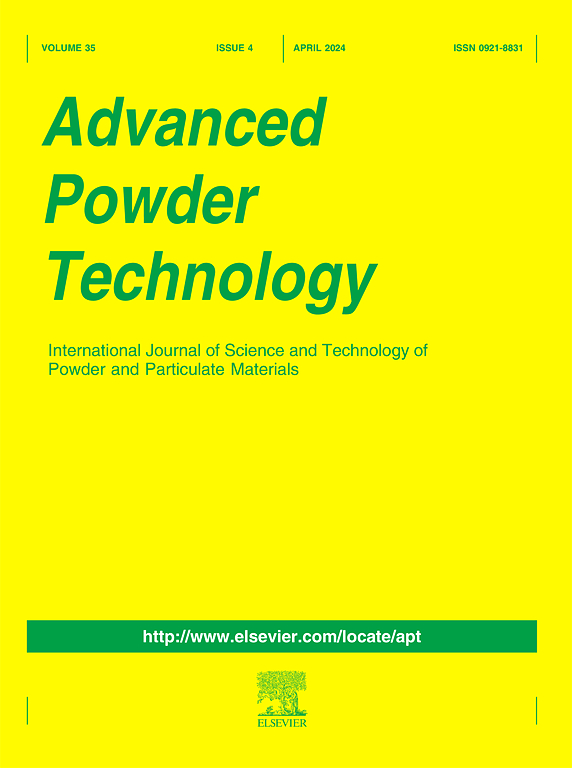Effects of nano-CaCO3 on microstructure and magnetic properties of soft magnetic composites (SMCs) containing FeSiCr and amorphous FeSiBCr powders
IF 4.2
2区 工程技术
Q2 ENGINEERING, CHEMICAL
引用次数: 0
Abstract
In this study, soft magnetic composites (SMCs) containing crystalline FeSiCr and amorphous FeSiBCr powders were prepared using nano-CaCO3/epoxy resin as an insulating layer at the low molding pressure. The microstructure and magnetic properties of the composites were investigated by SEM and meassuring resistivity, permeability, and magnetic core loss. The results show that the nano-CaCO3 addition with 1–5 wt% contents benefits dispersing the composite magnetic powders more effectively and improving the density and permeability. The magnetic core loss initially increases and subsequently decreases again with the increase of nano-CaCO3. By loss separation, it is found that the hysteresis loss and residual loss are the predominant, while the eddy current loss is relatively small in the frequency range of 200–1000 kHz. Based on the results, the influencing mechanism of nano-CaCO3 on the microstructure and magnetic properties was discussed.

纳米caco3对含FeSiCr和非晶FeSiBCr软磁复合材料微观结构和磁性能的影响
本研究以纳米caco3 /环氧树脂为绝缘层,在低压成型条件下制备了含结晶FeSiCr和非晶FeSiBCr粉末的软磁复合材料(SMCs)。通过扫描电镜和电阻率、磁导率、磁芯损耗等测试研究了复合材料的微观结构和磁性能。结果表明,添加1 ~ 5 wt%的纳米caco3能更有效地分散复合磁粉,提高复合磁粉的密度和磁导率。随着纳米caco3的增加,磁芯损耗先增大后减小。通过损耗分离发现,在200-1000 kHz的频率范围内,磁滞损耗和残余损耗占主导地位,而涡流损耗相对较小。在此基础上,探讨了纳米碳酸钙对复合材料微观结构和磁性能的影响机理。
本文章由计算机程序翻译,如有差异,请以英文原文为准。
求助全文
约1分钟内获得全文
求助全文
来源期刊

Advanced Powder Technology
工程技术-工程:化工
CiteScore
9.50
自引率
7.70%
发文量
424
审稿时长
55 days
期刊介绍:
The aim of Advanced Powder Technology is to meet the demand for an international journal that integrates all aspects of science and technology research on powder and particulate materials. The journal fulfills this purpose by publishing original research papers, rapid communications, reviews, and translated articles by prominent researchers worldwide.
The editorial work of Advanced Powder Technology, which was founded as the International Journal of the Society of Powder Technology, Japan, is now shared by distinguished board members, who operate in a unique framework designed to respond to the increasing global demand for articles on not only powder and particles, but also on various materials produced from them.
Advanced Powder Technology covers various areas, but a discussion of powder and particles is required in articles. Topics include: Production of powder and particulate materials in gases and liquids(nanoparticles, fine ceramics, pharmaceuticals, novel functional materials, etc.); Aerosol and colloidal processing; Powder and particle characterization; Dynamics and phenomena; Calculation and simulation (CFD, DEM, Monte Carlo method, population balance, etc.); Measurement and control of powder processes; Particle modification; Comminution; Powder handling and operations (storage, transport, granulation, separation, fluidization, etc.)
 求助内容:
求助内容: 应助结果提醒方式:
应助结果提醒方式:


